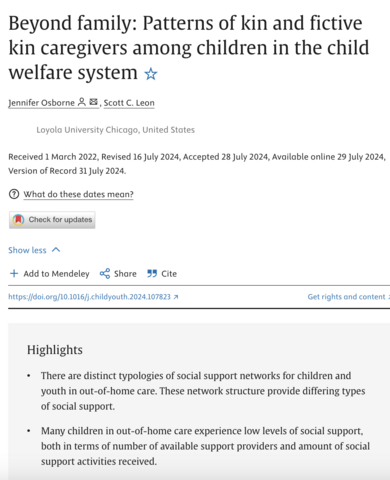Abstract
Objective
This paper aims to examine the social support network structures of youth in out-of-home care in the U.S. and to delineate the type of social support activities provided by kin and fictive kin within the networks.
Background
Children in the child welfare system experience significant benefits from contact with non-custodial kin and fictive kin. However, little is known about the support activities they provide (e.g., childcare, transportation, etc.) and their relationship to the children (e.g., grandparents, godparents, etc.).
Method
Support provision and relationship to the child was measured through chart reviews and interviews with key stakeholders, allowing for a description of the amount of support provided by various types of kin and fictive kin. Latent Profile Analysis (LPA) was applied to the data to determine the presence of distinct profiles.
Results
A four-profile solution emerged: (1) Multigenerational Predominant Cousin, (2) Bigenerational Lower Involvement, (3) Bigenerational Predominant Fictive Kin, and (4) Multigenerational Predominant Aunt/Uncle), suggesting heterogeneity in the social support networks of children in foster care.
Conclusion
Children in foster care experience varying levels of social support, which were spearheaded by specific categories of caregivers who provide distinct types of support. Thus, there is great heterogeneity in the social support networks of children and youth in care.
Implications
The identified clusters suggest that “one-size fits all” policy practices may not be effective in engaging and maintaining social support for children in out-of-home care. This research indicates that child welfare practitioners need to appreciate the complexity of social support patterns available to children.

